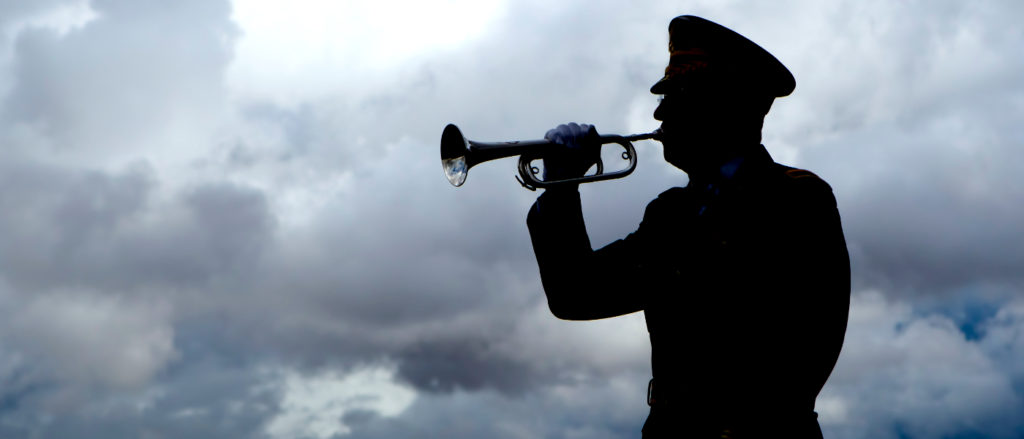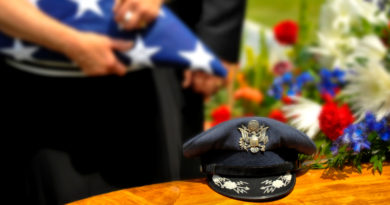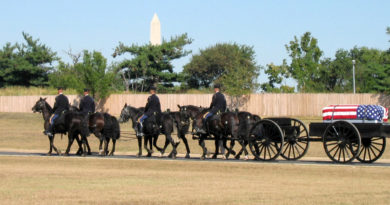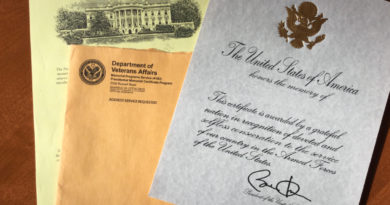The Origin and Meaning of “Taps”

Photo © iStock.com/gjohnstonphoto
Did you know that “Taps” is considered the most-played musical composition in the United States? While most Americans are familiar with the 24-note melody of “Taps,” few know much about the song’s origin and significance. This article explores the history and meaning of “Taps” and also offers lyrics for the haunting tune played at the funerals of the men and women who served in the U.S. Armed Forces.
New Twist on an Old Tune
According to Jari Villanueva, the world’s leading authority on the “Taps” bugle call, the melody now associated with the military funeral honors provided for deceased military service members resulted from a reworking of an older bugle call used in the military to signal “lights out” at the end of the day. The original bugle call, known as “to extinguish lights” or “tattoo,” was used by the American military but borrowed from the French, who might have composed it as early as 1809.
In July 1862, during the U.S. Civil War, Brigadier General Daniel Butterfield summoned his brigade’s bugler, 22-year-old Oliver Wilcox Norton, to his camp tent in Harrison’s Landing, Virginia, following a particularly brutal and bloody battle. Butterfield disliked the formality of the existing “to extinguish lights” bugle call and asked Norton to play the notes Butterfield had “written in pencil on the back of an envelope.”
After reworking the tune — “Lengthening some notes and shortening others, but retaining the melody as he first gave it to me,” according to Norton later — the Union general felt satisfied with the result and instructed his bugler to substitute the new version for the existing regulation bugle call henceforth.
According to Norton three decades later (August 1898), after he played this new version of “Taps,” other buglers from surrounding Union camps heard the melody and asked for copies of the tune. Gradually, as other commanding officers authorized the use of this new version, “Taps” as we know it today spread throughout the U.S. military.
“Taps” at Military Funerals
The first known use of “Taps” at a military funeral occurred in 1862 during the U.S. Civil War. Captain John C. Tidball, leading Battery A, 2nd Artillery, during the Peninsular Campaign in Virginia, feared that firing the customary three-shot volley at the funeral for one of his men might trigger renewed hostility by nearby Confederate forces. Tidball therefore ordered the playing of “Taps” instead, feeling that the tune “would be the most ceremony that would be substituted.”
Just as other buglers initially picked up the revised Butterfield/Norton bugle call, the use of “Taps” during military funerals also gradually spread throughout the U.S. military. In 1891, the first official reference to the mandatory use of “Taps” at the funerals of deceased service members was printed in the U.S. Army Infantry Drill Regulations.
Today, the use of “Taps” during the funeral of a deceased military service member is both mandatory and ubiquitous. Part of the military funeral honors to which honorably discharged servicemen and -women are entitled, at no cost to surviving families, the haunting melody of this tune evokes the honor, dignity and esteem our nation and its citizens feel these fallen warriors have earned. (Incidentally, “Taps” was played at Butterfield’s funeral in 1901.)
Lyrics for “Taps”
There are no official words for “Taps,” but this has not prevented people from writing lyrics that fit the melody’s 24 notes. Here are the words for several of the more popular versions:
Day is done, gone the sun,
From the hills, from the lake,
From the sky.
All is well, safely rest,
God is nigh.
~~~~~~~~~~~~~~~~~~~~~~~~
Go to sleep, peaceful sleep,
May the soldier or sailor,
God keep.
On the land or the deep,
Safe in sleep.
~~~~~~~~~~~~~~~~~~~~~~~~
Love, good night, Must thou go,
When the day, And the night
Need thee so?
All is well. Speedeth all
To their rest.
~~~~~~~~~~~~~~~~~~~~~~~~
Fades the light; And afar
Goeth day, And the stars
Shineth bright,
Fare thee well; Day has gone,
Night is on.
~~~~~~~~~~~~~~~~~~~~~~~~
Thanks and praise, For our days,
‘Neath the sun, ‘Neath the stars,
‘Neath the sky,
As we go, This we know,
God is nigh.
The Meaning of “Taps”
Like all artistic creations, the meaning behind “Taps” is subject to personal interpretation. Given its historical connection to the bugle call originally used to denote “lights out” at the end of the day, it’s easy to associate this melody to the death of a service member because “sleep” and “rest” are common euphemisms for death.
The various lyrics ascribed to this melody (above) introduce new elements that can also influence our interpretations, such as religious faith and the idea that death is part of life’s natural cycle, equivalent to the Sun setting each day to be replaced by the stars.
Regardless of any specific interpretation or meaning attributed to the melody, one thing is certain: the 24-notes of “Taps” crafted by Butterfield and Norton more than 150 years ago continue to prove a powerful and emotive force today during the funerals for the brave men and women who served and sacrificed on behalf of our nation.
Sources:
“‘All is well, safely rest’,” by Jari Villanueva, October 24, 2012. The American Legion Magazine. Retrieved February 1, 2017. http://www.legion.org/magazine/212632/‘all-well-safely-rest’
“24 Notes That Tap Deep Emotions,” by Jari Villanueva. www.west-point.org. Retrieved February 1, 2017. http://www.west-point.org/taps/Taps.html





